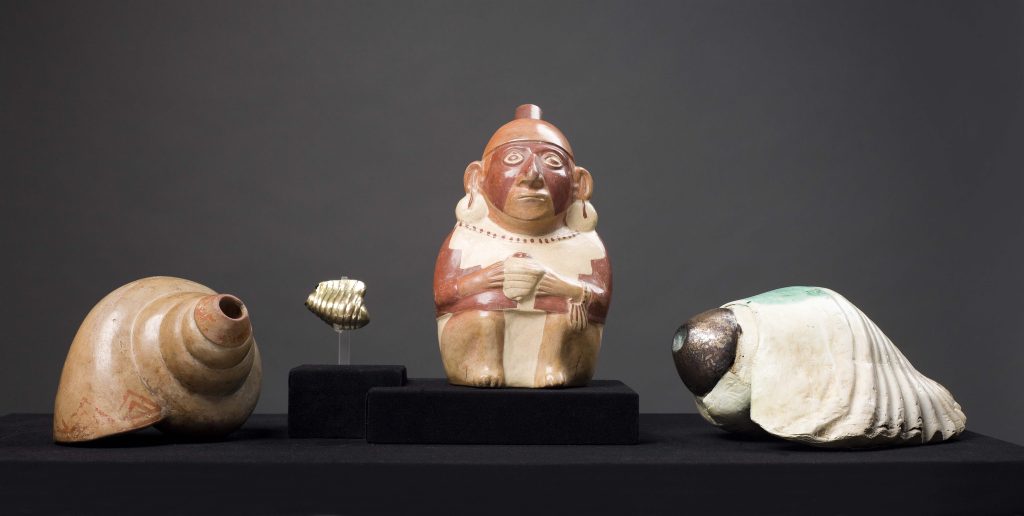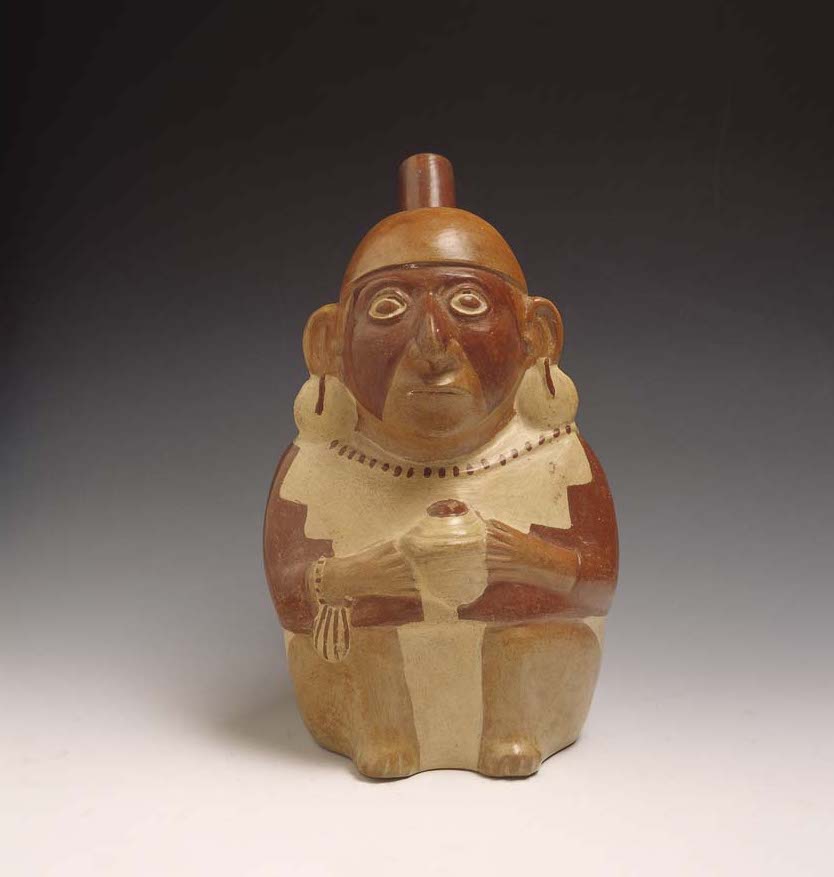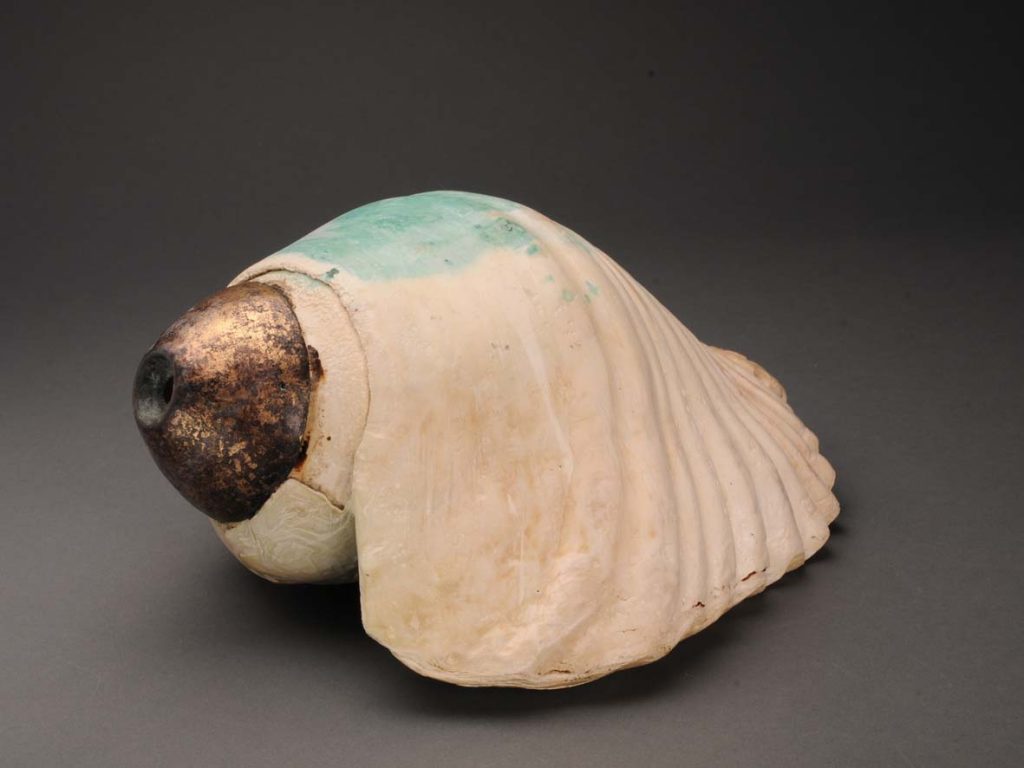Ceremonial Trumpet or Pututo, and Whistles
Room 9, Vitrine 114
Metal, ceramic, conch
Peruvian Northern Coast
1 AD – 1532 AD
ML002220, ML009912, ML100817, ML100999, ML101000, ML200001, ML200016-ML200021.
The tropical mollusk Strombus was used in the Andes as a ceremonial trumpet, and this type of instrument was known as a pututo.
The Strombus is a warm water seashell associated with the cycle of water. Water originates in the sea and then returns to the earth as rainfall, and via rivers and canals it irrigates the land and causes plants to flourish. Pututos, which produce a strong, deep sound, were played by trumpeters in ceremonies associated with water.
Strombus shells were also important offerings to the gods, who had to be thanked for the blessings they bestowed. That is why they are found in groups of offerings placed in important temples, beginning during the Formative Epoch. In ancient Peru ceramic trumpets were also made, and their designs recreated the shape of these seashells.
Ceramic Mochica trumpeter; Mochica Strombus seashell pututo; Mochica ceramic pututo; miniature gilded copper Strombus; silver Chimú whistles; seashell whistles.


